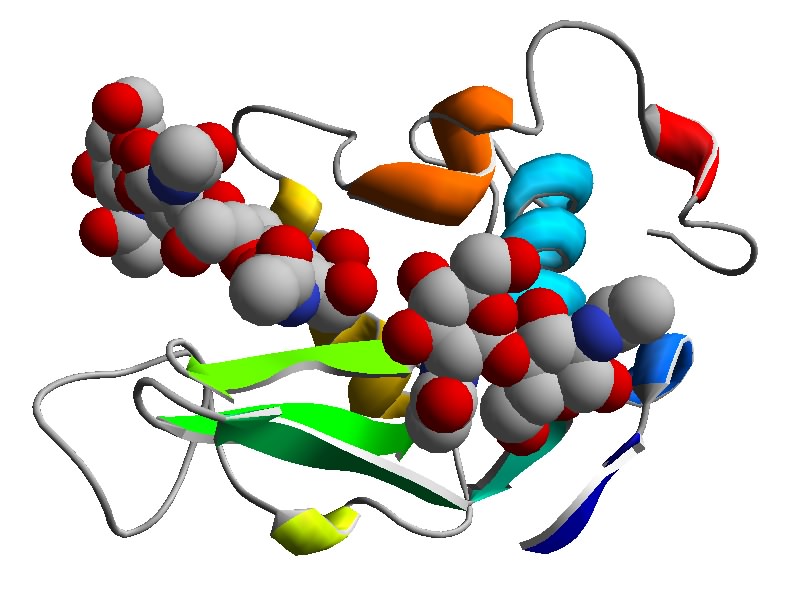Molecular Graphics ManifestoIntroduction |
The time has come to make molecular graphics an integral part of introductory biochemistry courses and other first courses in structural biology. I believe that beginning students should learn how to use graphics tools at the same time they are learning about protein structure, so that they build simultaneously their knowledge about proteins, graphics, and molecular data bases like the Protein Data Bank (PDB, 1). Students should emerge from the first semester of biochemistry having developed the skill of using their computers to obtain and study any macromolecular model available. They should be able to start from a figure in their text and proceed to independent exploration of the protein illustrated there. They should learn protein structure and protein graphics hand in hand, getting to know how to explore structure at the same time they are learning the basic principles of structure. This should happen in the classroom portion of the course, thus affecting all students who study biochemistry, not just those who sign up for the often-separate laboratory course. Finally, applications for these new skills should pervade the course.
Not Just Pushing Buttons
When I speak of integrating graphics into biochemistry, I am not talking about prepared web pages or other computer materials that include graphics frames and push-button display of various structural features. These materials are excellent supplemental or ancillary tools for teachers and students, but they are still textbook-like materials, and in that regard, are quite traditional. Although these tools provide vivid illustrations of structural concepts, and although students have modest control over displays (movement, prepared display switches), these materials are still largely passive learning tools, and do not require much knowledge of protein structure to operate. I recommend that first biochemistry courses provide, in addition to these more natural extensions of the text, hands-on experience with tools that empower students to obtain macromolecular models, and then to carry out incisive analyses of structure and structural interactions, as well as to create vivid and instructive views. This means learning how to use the tools of molecular graphics the way that a researcher uses them. In my opinion, it is time to put the skills of molecular graphics into the hands of students during their first biochemistry course.
While several articles have appeared on the subject of graphics exercises or projects in biochemistry courses (1, 2, 3, 4, 5), or tutorials in graphics (6), I am not aware of articles on, or suggested plans for, full integration of macromolecular graphics as a basic skill in biochemistry courses.
I present in this article arguments for this important modification of introductory biochemistry courses, a description of how I have redesigned my own course, and links to my resources for teachers and students who want to learn graphics while they learn biochemistry. In addition, I have included figures to show the kinds of images that you and your students can create with today's free molecular graphics software. All molecular images were created with Deep View (formerly Swiss-PdbViewer).
Figure: Human lysozyme with bound NAG oligomers. PDB
1LSZ.
Created with Deep
View. Click image to enlarge.
